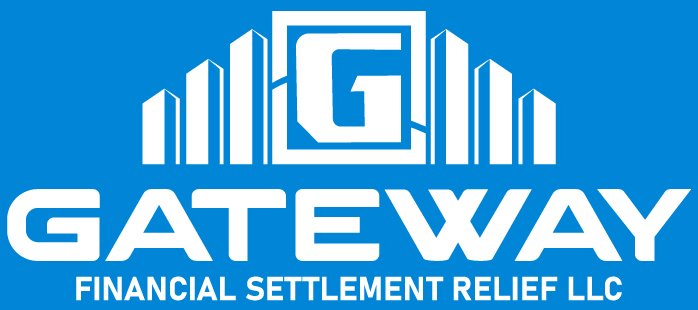What is Personal Loan Consolidation?
Personal loan consolidation is a financial strategy aimed at simplifying debt management by merging multiple debts into a single loan. This process enables individuals to pay off their existing debts, such as credit cards, medical bills, or other loans, with a new loan that typically comes with favorable terms. In this way, borrowers can streamline their monthly payments, reducing the complexity associated with managing various debts.
There are several forms of consolidation loans available in the market, catering to diverse financial situations. Hardship loans, for example, are designed for individuals facing temporary financial difficulties, allowing them to consolidate their debts and manage payments more comfortably during challenging times. Quick loans, on the other hand, provide fast access to funds, enabling borrowers to address pressing debts swiftly. Easy loans often come with simplified eligibility criteria, making them accessible to a broader range of borrowers who may not qualify for traditional loans.
The benefits of personal loan consolidation are numerous. One of the primary advantages is the potential for lower interest rates. By consolidating debts into a single loan with a more favorable rate, individuals may save considerably on interest costs over time. Furthermore, consolidation often results in simplified payments, as borrowers shift from multiple payment due dates to a single monthly installment. This convenience not only reduces the chances of missed payments but also lessens the overall stress associated with managing numerous creditors.
Overall, personal loan consolidation serves as an effective means for individuals to alleviate financial burdens. It offers a structured approach to debt management, making it easier for borrowers to regain control of their economic situations. By understanding personal loan consolidation, individuals can make informed decisions and explore options that align with their financial goals.
The Process of Consolidating Loans
Consolidating personal loans is a strategic move that can simplify your financial obligations and potentially reduce your overall interest rates. The first step in this process involves assessing your current debts. It is crucial to compile a comprehensive list of your outstanding loans, including the balance, interest rates, and monthly payments. This assessment will provide you with a clearer picture of your financial situation and the total amount that needs consolidation.
Once you have a detailed overview of your debts, the next essential factor to consider is your credit score. Credit scores play a pivotal role in loan consolidation, as they significantly influence the terms and interest rates offered by lenders. Lenders typically prefer borrowers with higher credit scores, which indicate lower risk. Therefore, it may be beneficial to check your credit report for any discrepancies and address them if necessary prior to initiating the consolidation process.
When it comes to consolidation options, borrowers can explore various avenues, such as obtaining a fast loan or enrolling in a debt relief loan program. A fast loan can provide immediate financial relief, while debt relief loans may offer longer repayment terms with lower monthly payments. It is imperative to compare different loan offers and understanding the terms associated with each option carefully. From interest rates to repayment terms, every detail matters.
Choosing the right lender is also a critical component of the consolidation process. Conduct thorough research to find lenders who specialize in personal loan consolidation and have positive reviews from other borrowers. Additionally, consider gathering all necessary documentation, such as proof of income, existing loan statements, and identification, to streamline the application process. By being well-informed and organized, you can successfully navigate the loan consolidation journey, paving the way toward improved financial health.
Pros and Cons of Personal Loan Consolidation
Personal loan consolidation can serve as a powerful tool for managing debts, offering numerous advantages for borrowers seeking financial relief. One notable benefit of this strategy is the potential reduction in monthly payments. By consolidating multiple loans into a single personal loan, individuals may secure a lower interest rate, making their monthly repayment amounts more manageable. This reduction can ease budget constraints, allowing individuals to allocate funds toward other essential expenses or savings. Additionally, consistent, on-time payments on a consolidated loan can improve an individual’s credit score over time. A higher credit score can lead to better borrowing terms in the future, enhancing financial opportunities further.
Another advantage of personal loan consolidation is the simplification of debt management. When multiple loans are combined into one, borrowers face fewer due dates and monthly payments to track, which can reduce the likelihood of missed payments—a common issue that often leads to late fees and negatively impacts credit histories. The streamlining of payments can foster a more organized financial life, making it easier to keep track of one’s obligations.
However, like any financial strategy, personal loan consolidation comes with potential downsides that must be weighed carefully. A primary concern is the possibility of incurring fees associated with the consolidation process, such as origination fees or prepayment penalties. Moreover, borrowers may end up with extended loan terms, which, while lowering monthly payments, may lead to paying more interest over the life of the loan. This could result in a longer timeline for overall debt repayment, causing some financial strain. Lastly, if individuals do not manage their finances wisely post-consolidation, there is a significant risk of accumulating more debt, negating the advantages that consolidation was meant to provide.
Tips for Successful Loan Consolidation
Successfully consolidating personal loans requires a strategic approach that encompasses budgeting, payment planning, and maintaining financial discipline. First and foremost, it is essential to create a comprehensive budget that outlines all income and expenditures. This budget will serve as a blueprint for understanding your financial state and what you can afford. Knowing your monthly cash flow can significantly influence your decision-making regarding which loans to consolidate and the repayment terms that align with your financial capacity.
Next, establishing a detailed payment plan is critical. It involves determining the total amount owed, the interest rates of various loans, and how much can be allocated towards paying off these debts each month. A well-crafted payment plan helps in identifying which debts should be prioritized and allows for a structured approach to repayment that can alleviate the stress associated with multiple loans. By focusing on high-interest loans first, borrowers can minimize the total interest paid over time, leading to more effective debt management.
Discipline plays a pivotal role in the success of loan consolidation efforts. It is important to resist the urge to accrue additional debt during and after the consolidation process. Establishing a long-term financial strategy can facilitate this discipline, ensuring that you live within your means. Moreover, communicating effectively with lenders can provide opportunities for better consolidation terms. Negotiating interest rates, repayment timelines, or seeking alternative loan products can optimize your consolidation experience.
Finally, regular reviews of one’s financial situation are essential for ensuring ongoing debt relief. By consistently evaluating your budget, assessing spending habits, and adjusting repayment plans when necessary, you can remain on track towards achieving financial stability. Successful loan consolidation is not just about merging debts; it is about developing responsible financial habits that prevent future debt accumulation.

